Dumbarton Oaks is a weird branch of Harvard. Based in Georgetown, Washington DC, it supports research into Byzantine art, Pre-Columbian art and landscape design with a library, funding and space for scholars and a public museum and gardens. We were there to study Byzantine art, so we didn't get to look at the pre-Columbian stuff and the rain kept us inside. That said, they were preparing a small exhibit on Byzantine manuscript copies of the New Testament, and they let us take a look. (Note that all captions were transcribed from the texts in the display cases and are not my text)
| Psalter and New Testament Dumbarton Oaks MS3 Middle Byzantine, Constantinople(?). ca. 1084, on Vellum The miniature on display (folio 80v) depicts the Annunciation in the upper register and the seated Virgin below. Under the illumination, the text begins with the initial letter 'M', in which the Visitation is nestled. The particular aspect of this composition is the seated Virgin. She gestures to an open book that contains her canticle, seemingly providing guidance for the devotional use of the text. This representation is unique to the DO manuscript. | 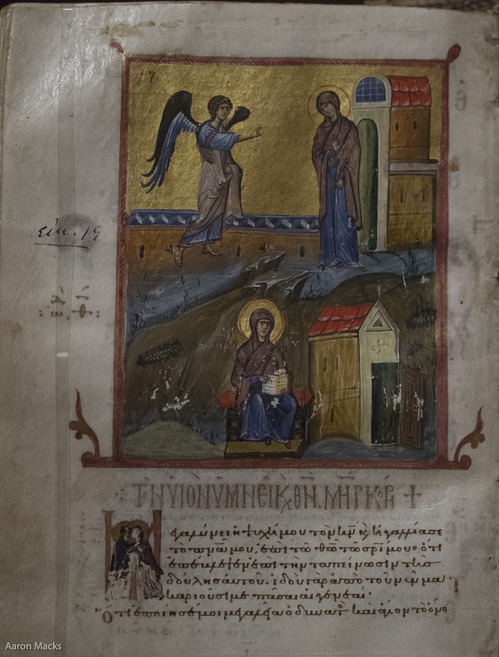 |
| Canon Table Gospel Book Dumbarton Oaks MS5 Middle Byzantine, Constantinople(?), late 11th C. The book contains the four gospels, written in dark brown ink as a single column of twenty lines. It is closely related to a group of more than a dozen manuscripts that were produced in Constantinople over a period of a few decades. The scribes of these books specialized in the production of illuminated luxury lectionaries and gospels for wealthy patrons. Ten lavishly decorated canon tables--concordances of the four gospels--are paired on the first five pages. Each pair is distinct, yet bears similar decorative motifs. One such motif is the presence of fleshy acanthus leaves with flame-like flowers. This book is open to canon table IV (folio 4r) | 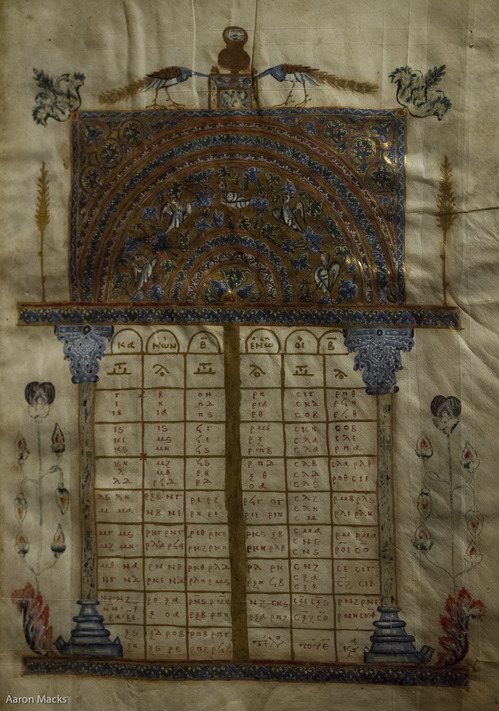 |
| Start of Luke from a Gospel Lectionary Dumbarton Oaks MS1 Middle Byzantine, Constantinople (?), Late 11th to 12th C Vellum, tempera gilding BZ.1939.12 A Gospel Lectionary -- different from a Gospel book -- contains passages (lections) of the four Gospel arranged in the order that they are read during the Byzantine liturgial year. This luxurious manuscript is thought to have been produced between the mid-eleventh and twelth centuries, mostly likely in a scriptorium in the capital city of Constantinople. The lectionary is peculiar because, while the first 42 folios were written in double columns, the following 107 were scribed in a cruciform shape. Few other lectionaries exist with the text written in a cruciform format. The book is opened to the beginning of the readings from Luke (folios 64v and 65r) | 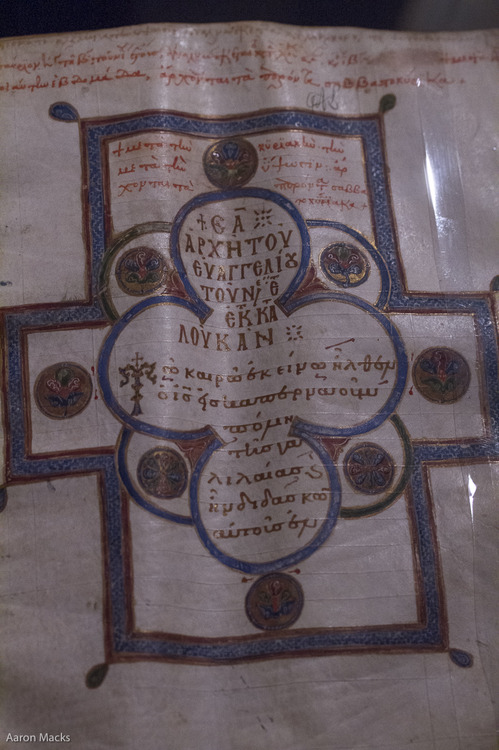 |
| Lectionary Leaf Middle Byzantine, Constantinople(?), early 11th C BZ.1979.31 The full page portrait of the evangelist Mark is a leaf from a lectionary. The book contained a dedication, indicating that it was presented by Empress Catherine Comnene to the Holy Trinity monastery of Chalki in March of 1063. | 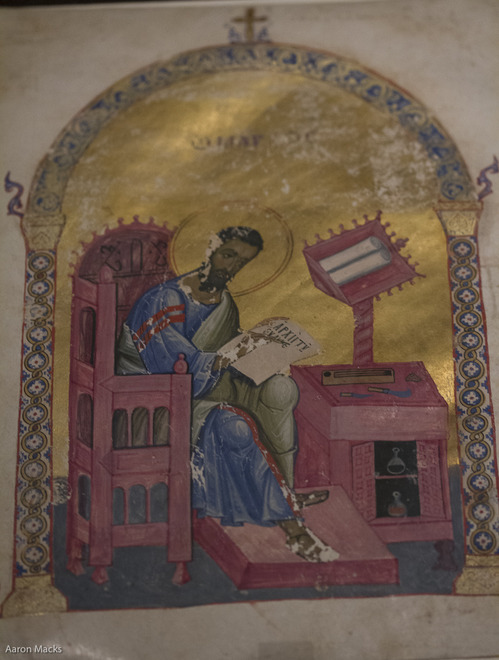 |
While there they also brought out a single leaf from an Armenian manuscript of the Alexander Romance, probably about 17th Century, that is in their collection. This illumination shows Alexander attaching a letter to his mother, Olympias, to a bird to send back to her. Though it is on paper, not parchment, and less costly, the iconography is pretty similar to the Alexander Romance in the John Rylands Library.
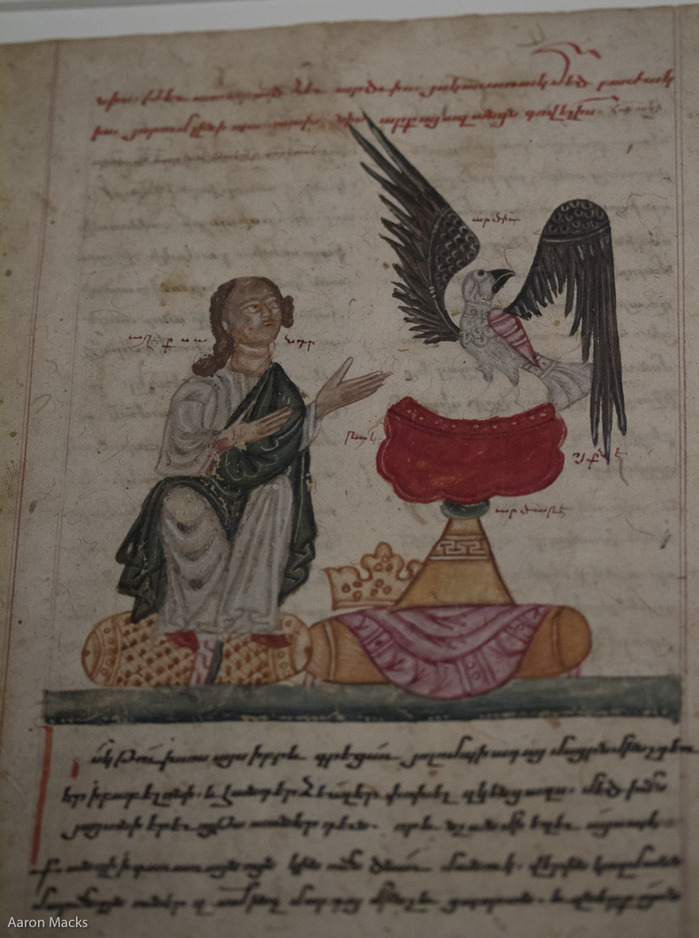
A



Leave a comment